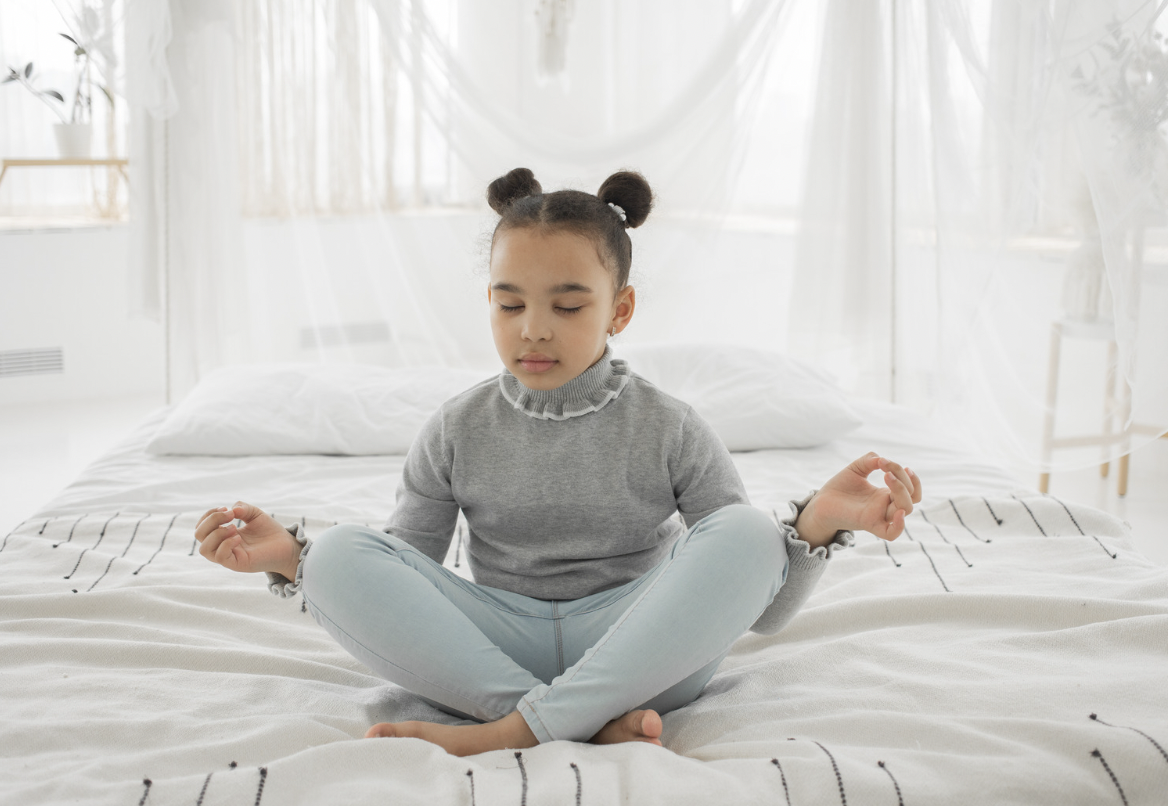Parenting can feel like a whirlwind—busy schedules, homework battles, and endless activities. Sometimes, it seems like kids are moving a mile a minute, and their emotions follow suit. That’s where mindfulness comes in! It’s a simple yet powerful way to help kids slow down, manage emotions, and feel more present. The best part? It doesn’t require special training or fancy tools—just a few small moments each day.
Why Mindfulness Matters for Kids
Just like adults, kids experience stress, worry, and frustration. The challenge is they don’t always know how to express or handle these emotions. Mindfulness—the practice of focusing on the present—helps kids regulate feelings, develop patience, and build emotional resilience. Studies show that children who practice mindfulness improve their attention span, emotional control, academic performance, and even sleep quality while simultaneously working to decrease levels of stress. According to Mindfulness.org, mindfulness can also help children to develop executive function skills such as problem-solving and adaptability.
By making mindfulness a daily habit, we can give kids lifelong tools to manage stress and build confidence. Whether it’s through breathing, movement, or gratitude, small mindful moments can make a huge difference in a child’s well-being.
1. Mindful Breathing: A Simple Reset
When kids get overwhelmed, they need a way to slow things down. Deep breathing is a quick and easy tool to help children reset their emotions and feel calmer. Mindful breathing is one of the foundational techniques recommended by experts like Dr. Mark Bertin to help children regulate their emotions and build self-awareness.
⭐ Try this: Teach your child “balloon breathing.” Have them pretend they are blowing up a big balloon, taking a deep breath in and slowly exhaling to release the air. Younger kids may enjoy lying down with a stuffed animal on their belly to watch it rise and fall.
2. Using the Five Senses to Stay Present
A great way to ground kids in the moment is by engaging their senses. This technique helps reduce worry and increases awareness of their surroundings. Tuning into the senses helps children better understand their emotions and reactions to the world around them.
⭐ Try this: Go on a “five senses walk.” Ask your child to name five things they can see, four things they can touch, three things they can hear, two things they can smell, and one thing they can taste. This can be done anywhere—even in the backyard or during a car ride!
3. Guided Imagery: Calming the Mind
Sometimes, kids need a little help finding their calm place. Guided imagery allows them to use their imagination to feel safe and relaxed. According to Christopher Willard, an expert in mindfulness for children, using visualization techniques can increase feelings of safety and emotional control.
⭐ Try this: Have your child close their eyes and picture a peaceful scene, like a beach or a quiet forest. Ask them to describe what they see, hear, and feel. This can also be a great bedtime wind-down activity.
4. Mindful Eating: Savoring the Moment
Kids are often in a hurry when they eat, barely tasting their food. Mindful eating helps them slow down and enjoy the moment. A simple way to introduce this practice is by making a game out of eating a snack slowly.
⭐ Try this: Ask your child to take small bites and describe the flavors, textures, and smells. This practice encourages patience and gratitude for the food they’re eating.
5. Gratitude Practice: Finding the Good
Teaching kids to focus on positive moments can help shift their mindset and build long-term happiness. The “Three Good Things” practice, recommended by experts, is a great way to instill gratitude without dismissing challenging emotions.
⭐ Try this: Create a gratitude jar where kids can write down something they’re thankful for each day. Before bedtime, you can also ask, “What was the best part of your day?”
6. Body Awareness and Movement
Mindfulness isn’t just about sitting still—it can also be active! Mindful movement helps kids connect with their bodies and release built-up tension. According to mindfulness experts, simple breathing techniques like “Teddy Bear Breath” or body scans help children build emotional awareness and self-regulation.
⭐ Try this: Guide your child through a “body scan.” Have them close their eyes and notice how each part of their body feels, starting from their toes up to their head. This helps them recognize tension and relax.
Final Thoughts
Mindfulness doesn’t have to be another task on your to-do list—it’s about small, intentional moments that bring calm and connection to your child’s day. Whether it’s deep breathing before a big test or a gratitude chat at bedtime, these small habits can make a big impact.
???? Want to learn more? Check out our other blog: What is Mindful Parenting? for more tips on how to support your child’s emotional well-being through mindfulness.
???? Need support? If you’d like personalized guidance on integrating mindfulness into your child’s routine, connect with a child therapist at Individual and Family Connection today! Click here to schedule a session.

